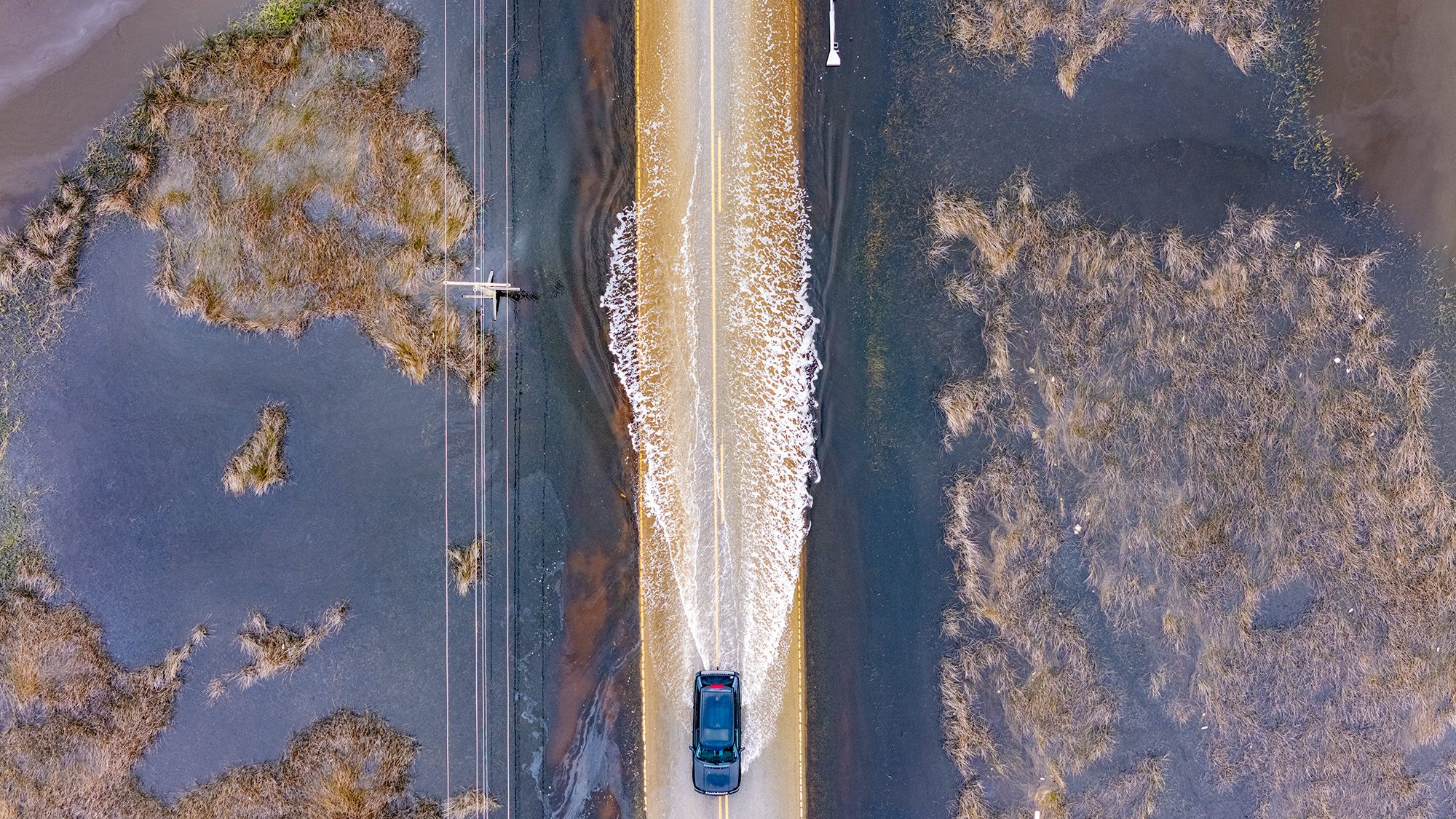FIGURE EIGHT ISLAND — It wasn’t D-Day, but on July 2 four environmental groups including the N.C. Coastal Federation made a landing on the northern tip of Figure Eight Island at Rich Inlet. Their mission was to share with the local media information about the amazing natural habitats and processes of the inlet, and why an ill-conceived effort to build a 995-foot-long sheet pile wall attached to a 505-foot-long rock groin in the middle of this fragile spit of land should be abandoned in favor of a more environmentally friendly alternative.
Cross-section drawings show that it will be a massive pile of rocks. It will require digging out about a half football field length of sand (140-foot wide excavation area) to about five and half feet below sea level. A bed of rocks 120 feet wide bed will be placed in the hole. This includes a 30-foot scour apron seaward of the groin to protect it when the beach washes away. The visible rocks will be 80 to 90 feet wide and about six feet above the sand.
Supporter Spotlight
There was a welcoming committee for our landing. The paid administrator for the private homeowners association on the island had learned about it in advance, and he sat in his beach buggy a few hundred yards away watching with binoculars. And then we were joined by a handful of local property owners who came to learn more about what we had to say as well.
That designation makes it illegal for federal agencies to authorize development, such as a massive rock terminal groin, within this designated critical habitat area that would in anyway damage its natural values. If for some reason the federal agencies fail to do their job, environmental groups have already compiled a massive agency record so that they’ll be ready to successfully pursue legal actions to protect this critical nesting area.The sand spit on the northern tip of the island is accreting rapidly and has become home for many oystercatchers, skimmers, terns, willets and plovers. Coastal biologist Lindsay Addison who works for Audubon North Carolina says that if is the largest least tern colony on record in N.C. in over forty years. “This year it’s the largest colony on the entire Atlantic coast,” she said in a recent interview. “It represents about a third of the breeding least terns in the state.” Given the huge amount of bird activity on these 65 acres, it’s easy to understand why the U.S. Fish and Wildlife Service designated it as “critical habitat” for endangered and threatened bird species.
Naively perhaps, we thought that the proponents of building the groin would also see just how valuable this land is for the birds, and would recognize that they will face insurmountable natural, legal and fiscal obstacles if they continue with this project. Since 2008, the Figure Eight Homeowners Association spent $210,000 lobbying the N.C. General Assembly mostly to allow the groin. These lobbying efforts have done nothing to weaken or remove barriers to the project imposed by the Congress through the Endangered Species Act.
One of the goals of the media outing was to help inform people about why this bird habitat is so special. We are always surprised when it is claimed that a groin will “stabilize” the habitat and make it better. This habitat is productive because it is so “unstable.” It must remain very low in elevation with no vegetation and occasionally experience flooding to be useful as nesting and foraging areas for these species of birds.
If the groin were built, it would cause the barren sand landward of the structure to become higher and vegetated. This would destroy its value as bird habitat. It would also destroy the beach and sand flats that are public trust areas used heavily by boaters and beach goers from all over the state. Computer models paid for by the association show habitat seaward of the groin washed away within five years of construction.
Supporter Spotlight
According to the association, it has spent more that $1.6 million on environmental studies for the terminal groin. What it got for its money was one of the worse draft environmental impact statement studies that various government agencies and the public have ever reviewed. Fundamental issues, such as securing permission from inlet landowners to build the project on their private lots, were completely overlooked. This resulted in having to go back to redo these already costly environmental studies. Due to the needed permission from landowners the association now proposes a groin location farther north on the island as the best alternative. The former location was also promoted as the best alternative by the association so one must wonder what their parameters are to determine what is best.
The 2012 draft study predicted disaster for property owners at the north of the island if the groin was not built. Instead, nature in a few short years has rebuilt the north end of the island at no cost to anyone. The draft study estimated the cost of managing the location of the inlet channel with dredging as hugely expensive, but again nature showed these costs projections were highly inflated. The channel would only take minor dredging to keep it in its current location if that became necessary. The costs of this minor dredging are far less than the costs of building and maintaining the terminal groin.
It’s time to forget the groin, and for everyone to work together to devise a much lower cost and practical alternative for Rich Inlet. That would be a much more productive and cost-effective use of everyone’s talents and resources.







